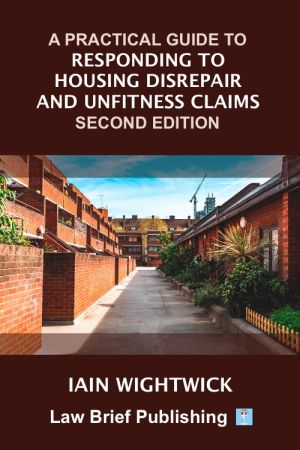
Disrepair (or more properly “housing conditions”) claims continue to rise in number – they have exploded since the first edition of this book was published in 2021. The new edition should be more helpful to those receiving and responding to them than its predecessor, as it addresses the changes in the law and is more comprehensive.
The increase in claims has been fuelled by the continued demise of the personal injury claims market for claimant solicitors. Almost all the major firms have turned to housing claims, and many new firms have entered the market. The scramble for tenant clients has caused many claimant lawyers to initiate ever less meritorious claims. Landlords will be familiar with the often grossly exaggerated lists of defects in claimant surveyors’ reports and the overpricing of works allegedly necessary to remedy them. The websites advertising such legal services limit their offer of help to social housing tenants, leaving private tenants without lawyers. Private rented housing stock is in a far worse state of repair and condition than social housing.
Housing conditions claims are not just wasteful in terms of officer time and finances. They can be very stressful for those involved, particularly where landlords face large numbers of claims and their staff are already busy planning and carrying out repairs, maintenance and improvements. All social landlords would prefer to direct their resources to repairs rather than legal fees.
The book is more about the strategies needed to deal with disrepair litigation rather than the substantive law.
Many tenants do not want to sue their landlord, and it is indisputable that most of the dissatisfaction which they have with the state of their home would be resolved if they engage in a lawyer-free problem-solving exercise before engaging solicitors.
Fortunately, the Court of Appeal has just handed down a very helpful decision in Churchill v Merthyr Tydfil Conty Borough Council [2023] EWHC 1416 CA. It is now possible for one party in litigation to ask the court to stop the claim while alternative dispute resolution is attempted. In social housing this is best achieved through the operation of the landlord’s internal complaints process (“ICP”).
The application of that philosophy to disrepair claims will dramatically reduce the damages and legal costs currently being paid by social landlords. Many of the complaints which tenants are making about housing conditions should never have involved lawyers. You’ll need to buy the book to find out more about it though!
If ADR through the ICP fails to address the tenant’s wants and needs, and litigation continues, the book is intended to guide the landlord through the process and to provide some protection against significant awards of damages and/or costs.
If you are a tenant’s representative, the book will help you to weed out good claims from the many which are at present gratuitously and unnecessarily issued.